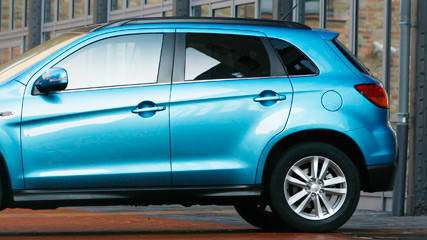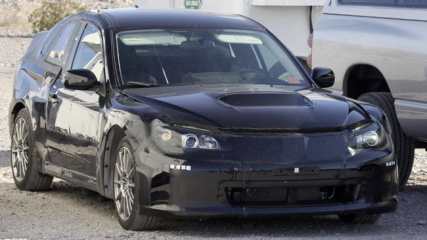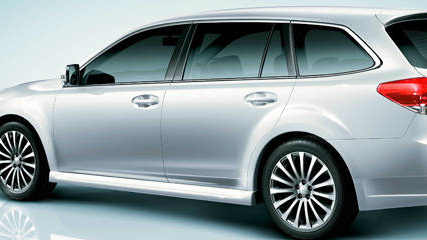Toyota Prius hatchback 2009 review
By Peter Lyon · 21 Apr 2009
You can't really get around it. There are others, from the original Honda Insight to the Civic hybrid and even the upcoming Porsche Cayenne and Panamera, but Prius was and is the benchmark. Right?Given the fact that the fuel-sipping Toyota was the petrol-electric trailblazer and kicked off the hybrid movement some 10 years ago, it has definitely earned its place in automotive history.Now, the car's third generation is here and it looks, well, much like the old one.But there is good news too. The all-new Prius is faster, handles more like a regular car, gets better mileage and employs higher-quality materials.It is going to face much tougher opposition, especially from a born- again Insight that looks a lot like the Prius and will be pitched lower on price, but the Toyota headliner is still the car being used to push the one million-a-year hybrid attack by the world's largest carmaker.Size wise, the new Prius is pretty much the same as before. It's just over one centimetre longer and sits on the same length wheelbase as before. The exterior design is a safe evolution of the current wedge- shape and is marginally slipperier through the air.But then you don't buy a Prius to admire it in your driveway. You buy it to make a social statement.Final pricing for the car has not been set for Australia, but the aim in the USA is to have it at $25,000 and to convert even more people than the greenies and movie stars who have already made it a hit _ particularly in California, where it is allowed in the car pool lane with only the driver at the wheel."It will be here in July," says Mike Breen of Toyota Australia, confirming the timing but not the price or equipment levels."It will be competitively priced. The specifications are different from the US, and there are a couple of things we get that the Americans do not, and they make a difference. They make a difference to the vehicle and as a result they have an impact on the pricing."Breen definitely rules out the Japanese plan to run the new Prius alongside the old one, to give a price fighter to combat the new Insight."We are not going to run the old with the new. The market will not sustain the new generation and the old generation being sold simultaneously," he says.He admits it was considered, but rejected."We are selling a Prius. But we keep an eye on all our competitiors."DrivingSitting in the tight new cockpit, I fire up the engine _ or at least push the start button to engage the silent electric motor.Power is up from the outgoing 1.5 litre's 57kW to the new 1.8's 73 at 5200 revs, with 142Nm of torque at 4000. Total power including the electric motor comes to 100kW, and there's an extra 27kW from the carryover nickel-metal hydride battery pack.No, the latest and greatest lithium-ion batteries are not yet in the picture for the Prius.A new front transaxle reduces power losses by up to 20 per cent and is now gear-driven to reduce friction and includes a reduction gear as well, meaning it can run at higher revs and make more power.The employment of the Atkinson cycle 1.8-litre engine is the main reason why the new car achieves a claimed 5L/100km economy, an improvement around five per cent Gently depress your right shoe and you can creep away in stealth mode _ or EV mode, one of three _ at up to 40km/h traveling up to 1.5km before the engine cuts in. Other modes are Eco, which most drivers will use, and Power for those who want quicker merging speeds on highways.The new hybrid might be over 40kgs heavier than the predecessor, but it still turns better and accelerates harder thanks to the new THSII hybrid system which helps it sprint from zero to 100km/h in 9.9 seconds.Using a feather throttle in my short 80-kilometre test around the perimeter public road surrounding Toyota's Fuji Speedway, I managed to move into the 4L/100km range. So Toyota's numbers are right on the money.The bottom line?The new Prius feels less like a hybrid and, well, more like a Toyota.More like a Corolla.Thanks to beefed-up torsional rigidity and revised suspension, there's better straight-line stability and braking response while the brake pedal does not suffer from that spongy feel of past regenerative brake setups.Its electrically assisted power steering has better weight and feedback when you steer into a corner, even though the predominant response is minor front-end push. It also gets a telescopic steering wheel which makes it easier to adjust and find the ideal driving position.Inside, Toyota has moved the fuel display and economy guage to the top of the dash in easier view. You also get a heads-up display which reflects in the lower section of the windscreen but in plain view to keep you up to date with your speed.Unfortunately, however, the driver's seat feels cramped due to the intrusion into the driver's knee and leg space of the rather thick and cumbersome centre console and dash.The Prius will impress many with its technological tour-de-force construction and better handling.But you still have to ask if the economy and so-so handling are enough to pinch buyers from diesel hatchbacks, without relying on the feel- good factor of a benchmark green purchase.














